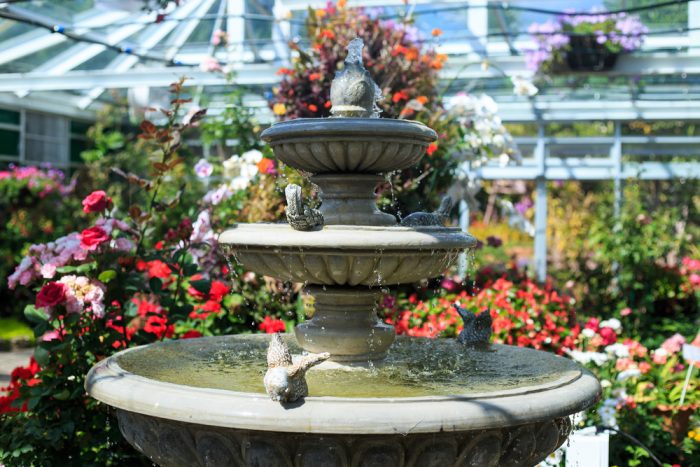An indoor fountain is a great way to enhance your living space. It serves as a great conversation piece especially during parties and gatherings. In quieter moments, it enhances a feeling of peace and calm with its soft bubbling sound. Whatever type or design you have, maintaining your indoor fountain is a must.
A dirty indoor fountain is not only unattractive, but can also be the source of mold and algae infestation that can be harmful to your health. Thus, it is important to make sure that your indoor fountain is clean and functioning well. You can employ the help of cleaning professionals, or you can follow these quick and easy steps in maintaining your fountain at home:
- Unplug and disassemble all parts of your indoor fountain. These would usually be the submersible pump and other accessories, such as pebbles or stones, and other moving parts of the fountain like the pipes and tubes, depending on its design. Some indoor fountains may be made of materials such as metal or glass. For water features like these, make sure to handle these parts carefully. Also, don’t forget to throw away the old circulating water.
- Clean the parts with warm water and mild liquid soap. Use a soft sponge on delicate surfaces and materials such as natural stone like marble or granite. You can use a toothbrush to make sure that tiny corners and crevices are reached. If needed, use a lime removing cleaner or a natural mixture of white vinegar to get rid of algae and mold. Make sure all parts and surfaces are rinsed well afterwards and dried if necessary.
- Assemble the indoor fountain once more. Bring in the pebbles and stones, and build up the rest of the elements according to the fountain’s design. Refer to the fountain’s assembly guide if needed. Make sure that the submersible pump is secure and functional.
- Use distilled water instead of tap water. Distilled water is purer and may help prevent the growth of algae and other organisms on the surfaces of the fountain. Tap water tends to have minerals and metals that can also build up and cause clogging in the pump and pipes.
- Plug the indoor fountain and turn it back on. In order to keep your fountain’s pump in good working condition, avoid constantly turning it off and on. Simply keep it plugged it, and make sure to top up the water once the level is low. Switching a pump on and off frequently often leads to early wear and tear on the machine.
Indoor fountain maintenance
If you encounter any major problem that ordinary troubleshooting cannot fix, make sure to contact your indoor fountain supplier or a relevant professional. Always be careful with plugs and wirings in order to avoid electrocution. A good indoor fountain supplier can check on your unit periodically to make sure that everything is in reliable working order, especially when it comes to larger fountains and more complicated set-ups, such as waterfalls or multi-level fountains.
Making the most out of indoor fountains
Many homeowners get excited when installing an indoor fountain but tend to get complacent in its upkeep. This not only poses potential risks to health, but it can also compromise the integrity of the fountain’s functionality.
It can also be more costly in the long run due to damages to the fountain’s pump and other working parts. Thus, in order to make the most out of your investment in an indoor fountain, you need to expend some effort to maintain it periodically.
